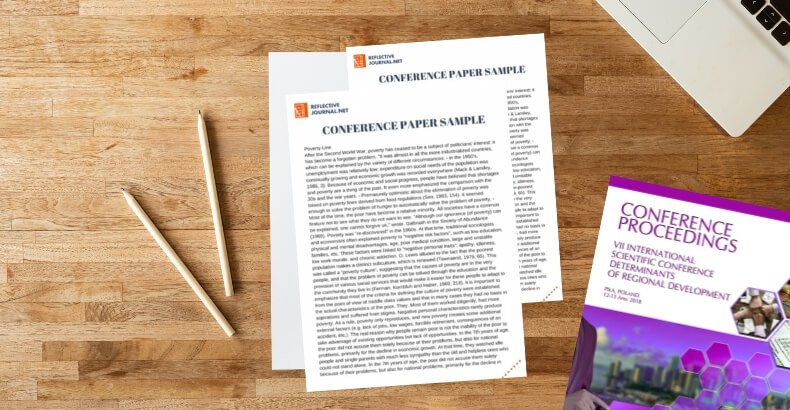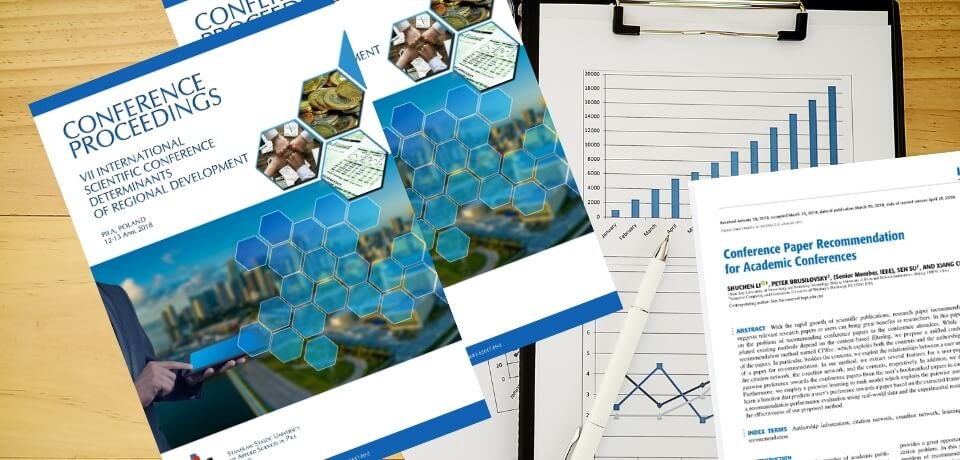Conference papers are academic works presented at academic gatherings, allowing researchers to share their findings and insights with peers. These papers often serve as a platform for innovative ideas and developments in various fields. As a result, many wonder: Is a conference paper a good source?
Yes, conference papers can be valuable sources of information. These papers present timely insights into current trends and innovative concepts that may not yet be available in traditional journals. However, consider factors such as the peer review process, the credibility of the authors, and the reputation of the conferences where they are presented to fully assess their reliability.
If you’re curious about the quality and relevance of conference papers in your research, you’re in the right place. This article will provide you with all the necessary information to assess the significance of conference papers and how to determine their usefulness in academic work.
What Makes a Conference Paper Good?
A good conference paper is concise, well-structured, and insightful. It addresses a clear research question or problem and provides innovative solutions or perspectives. A strong abstract and introduction set the stage, capturing the audience’s interest while outlining the paper’s relevance and objectives.

Quality content is crucial, supported by robust data, sound methodologies, and logical arguments. Effective use of visuals, such as charts or graphs, strengthens knowledge, while citations of credible sources lend authority. The conclusion should tie everything together, emphasizing the significance of the findings.
When writing a business conference paper, focus on presenting actionable insights relevant to your audience. Highlight practical applications and align your work with current trends or challenges in the business world. Balancing technical rigor with accessibility ensures your paper resonates with both experts and general attendees.
Is a Conference Paper a Good Source?
Conference papers are increasingly recognized for their potential value in academic research. They offer insights into the latest trends, innovative ideas, and upcoming topics in various fields. Assessing their reliability as sources requires knowledge of their strengths and weaknesses. Here’s what you need to know.

Nature of Conference Papers
Conference papers are typically shorter than journal articles, focusing on presenting fresh ideas or findings. They are often presented in a live setting, allowing authors to engage directly with their audience. This format encourages clarity and simplicity, making it easier for researchers to communicate complex concepts effectively.
Peer Review Process
Not all conference papers receive an in-depth peer review, which can affect their quality. Some conferences have strict review processes, while others may accept papers with minimal evaluation. The review standards of a specific conference can help assess the reliability of the papers presented there.
Timeliness of Content
One of the key advantages of conference papers is their timeliness. They often highlight the latest research and emerging trends, providing insights that may not yet be available in journals. This quick response time makes them valuable for staying current in advancing fields, especially in areas like technology and business.
Relevance to Current Discussions
Conference papers frequently address ongoing debates and current issues within a field. They serve as platforms for presenting new ideas and challenging existing theories, which can lead to lively discussions. This relevance increases their value as sources for understanding current academic conversations.
Practical Applications
Many conference papers focus on real-world challenges and provide practical solutions. They often bridge the gap between theory and practice, making them particularly useful for practitioners and policymakers. This application of research to real-world problems highlights the importance of conference papers and increases their relevance in various disciplines.
Networking and Collaboration Opportunities
Attending conferences not only allows researchers to present their work but also facilitates networking with peers and industry leaders. This collaboration can lead to future research projects and partnerships. Engaging with authors directly can improve your knowledge of the paper’s context and implications.
Citing Conference Papers
Citing conference papers correctly is crucial when using them as sources. Follow the citation style required by your discipline to ensure accuracy and reliability. Proper citation allows readers to trace the original research and assess its relevance to their work.
Conference papers should be evaluated for credibility, relevance, and peer review status before being used as sources of information. By being aware of their strengths and weaknesses, you can effectively incorporate them into your research and gain insights from current developments in your field.
How to Include Conference Papers in Your Research?
Your research can be strengthened by using conference papers. These papers often present recent findings and innovative ideas, making them valuable resources. Integrating them effectively can strengthen your arguments and provide a relevant context. Here are the key steps to consider.
Step 1: Identify Relevant Conference Papers
Begin by searching for conference papers that align with your research topic. Use academic databases, conference proceedings, and citation indexes to find papers related to your field. Focus on papers that address themes relevant to your study, as their findings can significantly contribute to your understanding and arguments.
Step 2: Analyze the Content
Once you have selected relevant conference papers, analyze their content thoroughly. Look for the key findings, methodologies, and discussions presented in these papers. You will be able to incorporate the main arguments effectively if you understand how they relate to your research. This analysis highlights the importance of conference paper contributions to your field.
Step 3: Compare with Other Sources
To ensure a well-rounded perspective, compare conference papers with other academic sources, such as journal articles and books. This comparison validates the findings and arguments presented in the conference papers. It also allows you to identify any gaps or differing viewpoints that can enrich your research.
Step 4: Incorporate into Your Literature Review
When writing your literature review, include conference papers. Clearly state how these papers contribute to your research question or hypothesis. Highlight their relevance and the unique insights they provide. This integration demonstrates your awareness of current trends and discussions in your field.
Step 5: Cite Properly
Proper citation is crucial when integrating conference papers into your research. Follow the citation style required by your discipline to give appropriate credit to the authors. Accurate citations improve your work’s credibility and also allow readers to trace the original research easily.
By effectively using conference papers in your research, you can significantly increase its quality and relevance. You can strengthen your arguments and contribute to ongoing academic discussions when you identify relevant papers, analyze their content, compare them with other sources, and cite them.
Tips for Analyzing Conference Paper Quality
A conference paper’s quality must be assessed to ensure its reliability. You can determine the relevance and credibility of a paper with a thoughtful assessment. Here are some tips to guide your evaluation process.

- Check the Author’s Qualifications: Investigate the author’s background and qualifications. A well-established researcher with relevant expertise adds credibility to the paper. Look for their previous publications and contributions to the field to gauge their authority on the subject.
- Examine the Conference’s Reputation: Consider the reputation of the conference where the paper was presented. Established and respected conferences typically have rigorous selection processes. A paper from a reputable conference is more likely to meet high academic standards.
- Assess the Research Methodology: Take a look at the research methods that were used in the paper. A solid methodology improves the validity of the findings. You should look for clear descriptions of how the research was performed, including data collection and analysis methods.
- Look for Clarity and Structure: A well-structured paper is easier to read and understand. Check if the paper follows a logical flow, with clear sections that outline the introduction, methodology, results, and conclusions. Clarity in writing reflects the author’s understanding of the topic.
- Identify Citations and References: Review the citations and references used in the paper. A high-standard conference paper should reference relevant literature and sources to support its claims. Proper citation practices indicate thorough research and respect for the academic community.
- Analyze the Field Contribution: Determine how the paper contributes to the existing body of knowledge. Conference papers should provide new insights, challenge established theories, or address current issues in the field. Assessing its impact can help gauge its significance.
The quality of a conference paper depends on several factors, including the author’s credentials, the conference’s reputation, and the clarity of the research. Following these tips will help you assess the value of the information presented and determine how to use it.
FAQs about Is a Conference Paper a Good Source?
A conference paper can provide insights into emerging trends and innovative research in a variety of fields. However, knowing their reliability and relevance is crucial for effective academic work. Below are frequently asked questions that will clarify their role as sources.
How Do Conference Papers Contribute to Academic Research?
Conference papers contribute to academic research by presenting new ideas and findings that may not yet be published in journals. They often highlight the latest developments and ongoing discussions in a particular field. This immediacy helps researchers stay informed and can spark further inquiry and collaboration.
What Factors Affect the Reputation of Conference Papers?
Several factors can affect the reputability of conference papers, including the peer review process and the reputation of the conference. Papers presented at well-established conferences with rigorous review standards are generally more reliable. Assessing the quality of information is easier with knowledge of these factors.
How Can I Identify Relevant Conference Papers for My Research?
Use academic databases and conference proceedings to locate relevant conference papers. Look for papers that align with your specific research question or topic. Focus on those that discuss themes, methodologies, or findings that can improve your understanding and contribute to your work.
What Are the Limitations of Using Conference Papers as Sources?
While conference papers offer valuable insights, they have limitations, such as varying levels of peer review and depth of content. They may not provide detailed analyses like journal articles. Therefore, verify their findings with other scholarly sources to ensure a well-rounded learning.
How Should I Cite Conference Papers in My Research?
Be sure to use the citation style appropriate to your discipline when citing conference papers. Include essential details such as the author, title of the paper, conference name, location, and date. Proper citation strengthens your work’s reliability and allows readers to locate the source easily.
End Note
Scholars rely on conference papers for current analysis and to create discussion. For researchers wishing to stay current in their fields, they serve as platforms for presenting innovative ideas and findings. By identifying their characteristics, you can understand their contribution to ongoing conversations.
So, is a conference paper a good source? Yes, they can be valuable sources of information when evaluated carefully. Their accessibility and relevance to current discussions make them essential for exploring emerging trends. However, you should take into account factors such as the peer review process and the conference’s reputation in assessing their credibility.
As you explore the world of conference papers, remember to analyze their content critically, compare them with other sources, and cite them properly in your work. By doing so, you can improve the quality of your research and enrich your knowledge of contemporary issues. Best wishes as you explore and utilize conference papers in your academic career!